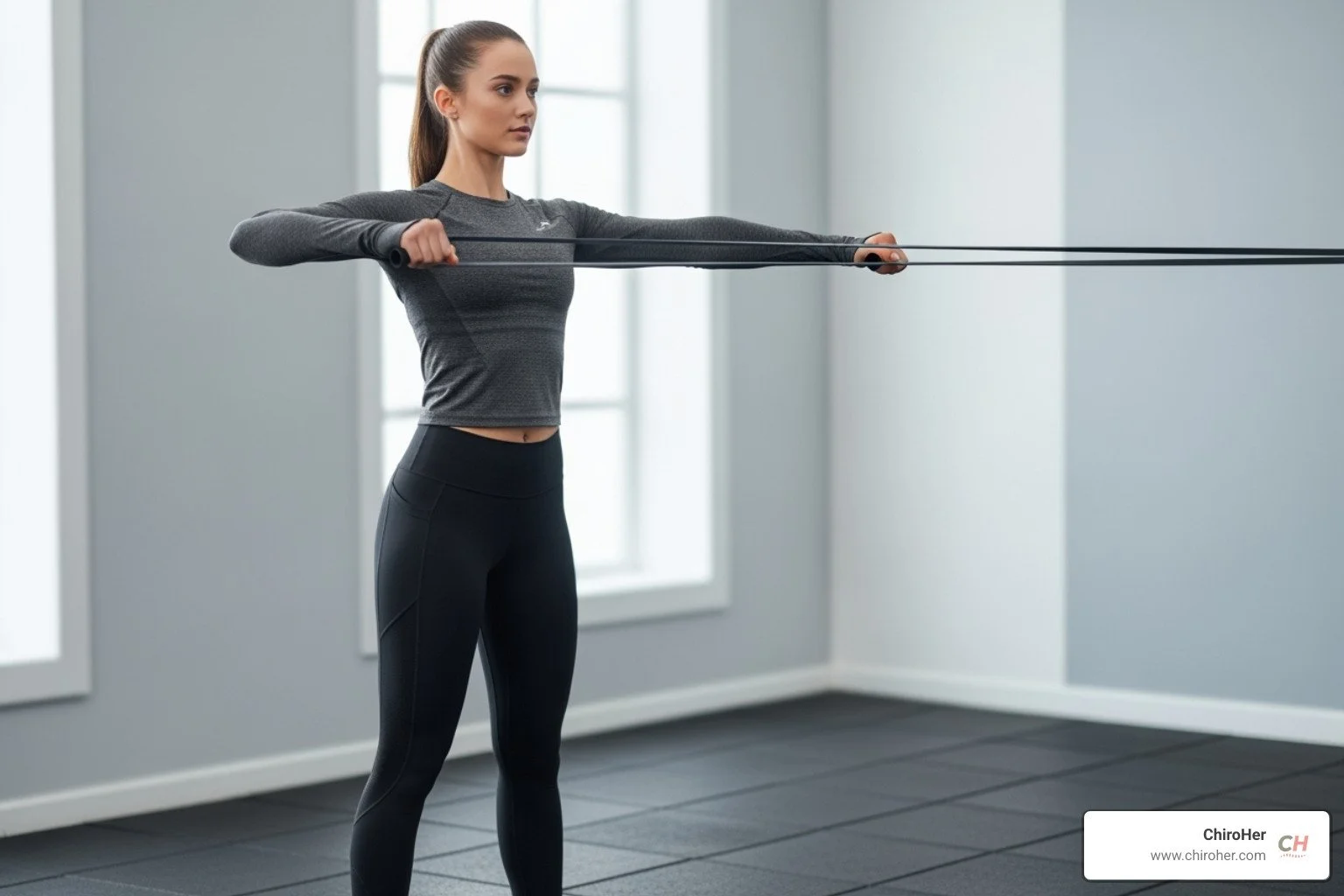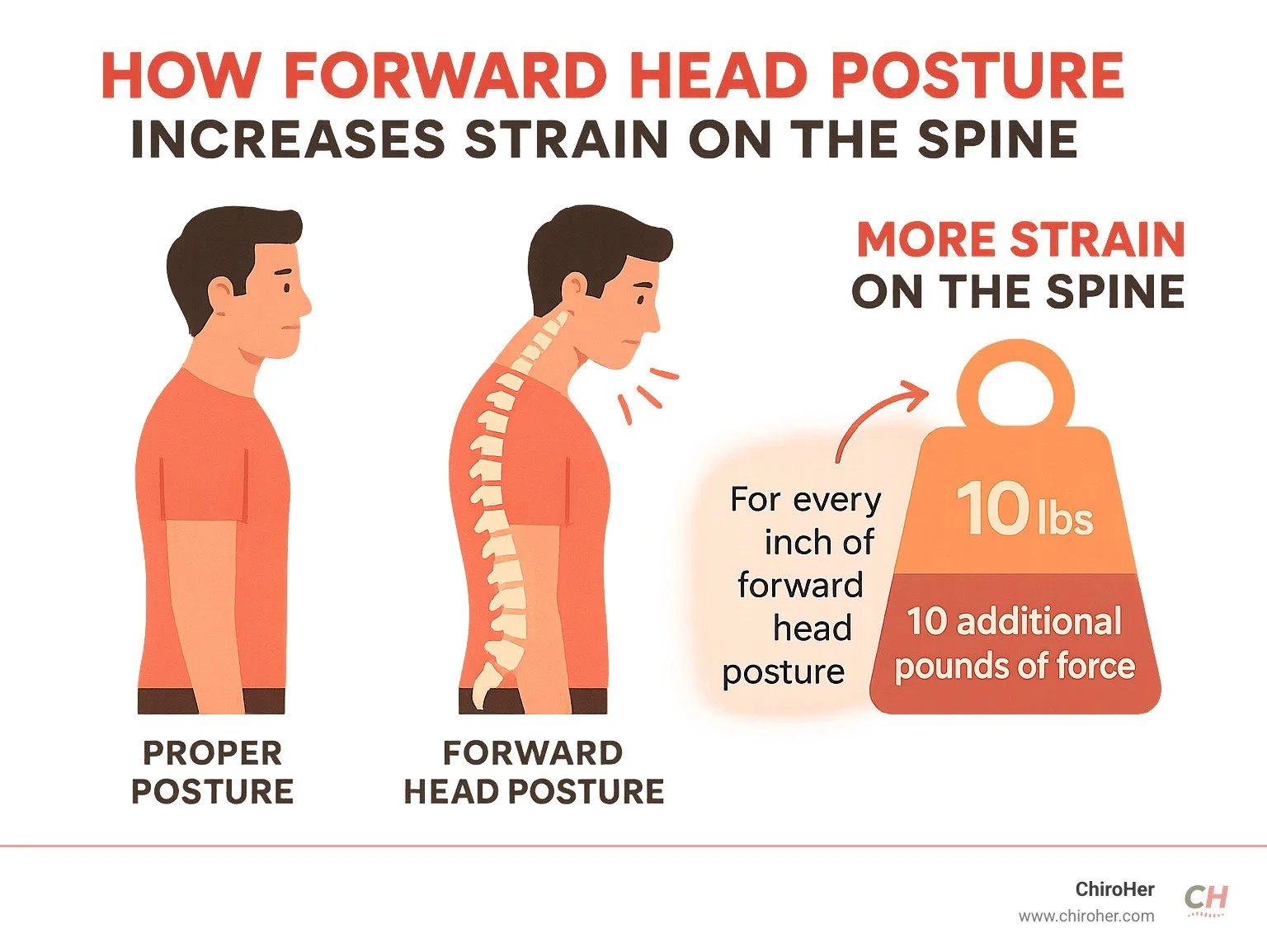Unlock Your Best Posture: Top Exercises for Upper & Lower Back
Why Good Posture Matters and What Causes It to Decline
Correct posture exercises can transform how you feel and move every day. If you're looking for quick solutions, here are some effective exercises to start with:
Upper Back & Neck:
Chin Tucks - Strengthen deep neck muscles and reduce forward head posture.
Wall Angels - Open the chest and strengthen upper back muscles.
Doorway Stretch - Release tight chest muscles from hunching forward.
Lower Back & Core:
Bird-Dog - Stabilize the spine and strengthen core muscles.
Glute Bridge - Activate glutes and support the lower back.
Plank - Build overall core stability for better spinal support.
Poor posture is common in our modern world. When we're hunched over computers or looking down at phones, our bodies pay the price through muscle imbalances and chronic pain. The good news is that your posture isn't permanent. With the right exercises, you can retrain your body to hold itself in proper alignment.
I'm Dr. Michelle Andrews, founder of ChiroHer in Oklahoma City, and I've helped hundreds of busy professionals and moms find relief from posture-related pain. Through my work with patients experiencing everything from "text neck" to pregnancy-related back pain, I've seen how correct posture exercises combined with proper spinal alignment can dramatically improve both comfort and confidence.
Good posture is about maintaining a neutral spine to minimize strain on your muscles and joints. Unfortunately, modern habits like slouching and prolonged screen time contribute to postural decline. This "text neck" puts immense pressure on your cervical spine, as every inch your head moves forward adds about 10 pounds of force to your neck and back.
Over time, these habits create muscle imbalances, where some muscles become tight while others weaken. The consequences of poor posture extend beyond aesthetics and can include:
Persistent pain in the neck, back, and shoulders
Headaches and jaw pain
Difficulty breathing properly
Reduced flexibility and balance
Negative impact on mood and confidence
The good news is that bad posture can be improved with dedicated effort, and it's rarely too late to start.
A Practical Guide to Correct posture exercises
Improving your posture is a powerful step toward a healthier life. Our approach focuses on strengthening key postural muscles and stretching those that have become tight. This dual strategy helps rebalance your body, allowing it to maintain proper alignment naturally.
Regular practice of correct posture exercises offers many benefits. Beyond alleviating pain, it can reduce your risk of injury, improve balance, and improve flexibility. Research also suggests that better posture can boost confidence and body image. At ChiroHer, we've seen patients experience this change in how they feel physically and how they carry themselves.
Scientific research on posture and body image
Top Correct posture exercises for Upper Back, Neck, and Shoulders
Many of us spend hours hunched over devices, leading to rounded shoulders and a forward head. These correct posture exercises target those areas to help you stand taller and find relief.
Chin Tuck This exercise strengthens deep neck muscles and helps correct forward head posture.
How to do it: Sit or stand tall. Gently tuck your chin toward your chest, creating a double chin, while looking straight ahead. Feel a stretch at the back of your neck.
Sets/Reps: Hold for 5-10 seconds, then relax. Repeat 5-10 times for 2-3 sets.
Benefits: Alleviates neck pain, strengthens head-supporting muscles, and retrains proper head alignment.
Wall Angel This move opens your chest and strengthens upper back muscles, counteracting rounded shoulders.
How to do it: Stand with your back, head, and shoulders against a wall. Place your arms against the wall with elbows bent at 90 degrees. Slowly slide your arms up, keeping contact with the wall, then slide them back down.
Sets/Reps: Perform 10-15 repetitions for 2-3 sets.
Benefits: Improves shoulder mobility, strengthens muscles between your shoulder blades, and stretches tight chest muscles.
Doorway Stretch This stretch loosens tight chest muscles that pull your shoulders forward.
How to do it: Stand in a doorway with forearms on the frame, elbows at 90 degrees. Step one foot forward until you feel a stretch across your chest.
Sets/Reps: Hold for 15-20 seconds. Repeat 3 times.
Benefits: Opens the chest, improves shoulder alignment, and reduces tension.
These exercises combat the effects of prolonged sitting. For more detailed guidance, explore our therapeutic exercise offerings.
More info about our Therapeutic Exercises
Key Exercises for Lower Back, Core, and Hips
The lower back, core, and hips are the foundation of your posture. Weakness here can lead to pelvic tilt and lower back pain. These correct posture exercises build a strong, supportive core and a stable pelvis.
Bird-Dog This exercise strengthens your core and lower back while improving balance.
How to do it: Start on your hands and knees. Extend your right arm forward and your left leg back, keeping your hips level and back flat.
Sets/Reps: Hold for 2-3 seconds, then alternate sides. Perform 10 repetitions per side for 2-3 sets.
Benefits: Strengthens the core, glutes, and lower back, and promotes spinal stability.
Glute Bridge Strong glutes are vital for supporting your lower back and pelvis.
How to do it: Lie on your back with knees bent and feet flat. Lift your hips until your body forms a straight line from shoulders to knees.
Sets/Reps: Hold for 2-3 seconds, then lower. Perform 10-15 repetitions for 2-3 sets.
Benefits: Strengthens glutes and hamstrings, helps correct anterior pelvic tilt, and alleviates lower back pain.
Plank The plank builds core strength, which is vital for a stable spine.
How to do it: On your forearms, keep your body in a straight line from head to heels. Engage your core and glutes.
Sets/Reps: Hold for 20-30 seconds, maintaining proper form. Repeat 2-5 times.
Benefits: Develops strength in the entire core for a neutral spine.
These exercises create a solid foundation for better lower body posture and spinal health.
How to Improve Anterior Pelvic Tilt
Can you recommend other correct posture exercises?
Yes! Movements that promote spinal mobility and engage your core can significantly improve your posture. These correct posture exercises offer dynamic ways to improve alignment.
Cat-Cow This gentle movement improves spinal mobility and relieves back tension.
How to do it: On hands and knees, exhale to round your spine up (Cat), and inhale to arch your back (Cow).
Sets/Reps: Flow between poses for 10 repetitions. Aim for 2-3 sets.
Benefits: Increases spinal flexibility and promotes body awareness.
Side Plank This move targets your obliques, which are important for lateral stability.
How to do it: Lie on your side, propped on your forearm. Lift your hips to form a straight line from head to heels.
Sets/Reps: Hold for 15-30 seconds per side. Repeat 2-3 times on each side.
Benefits: Strengthens oblique muscles and improves lateral stability.
These exercises complement the others by adding dynamic movement. A strong core is the cornerstone of good posture.
Core strength is important for posture
Maintaining Your Posture for Long-Term Health
Achieving better posture goes beyond exercises; it involves integrating mindful habits into your daily life. While correct posture exercises are effective, long-term improvement depends on how you carry yourself every day.
At ChiroHer, we emphasize ergonomics, mindfulness, and consistency. An ergonomic setup supports a neutral posture, while mindfulness helps you notice and correct slouching. Regular practice is key, and it's never too late to start making improvements.
Integrating Good Posture into Your Daily Life
Small adjustments to your daily routine can make a big difference.
Ergonomic Setup: Ensure your workstation supports a healthy posture. Your feet should be flat on the floor, your monitor at eye level, and your shoulders relaxed. A sit-stand desk can also help reduce the effects of prolonged sitting.
Movement Breaks: Take a short break every 30-40 minutes to stand, stretch, or walk around. This prevents muscles from becoming rigid.
Posture Checks: Throughout the day, check your alignment. Are your shoulders back? Is your head stacked over your shoulders? These small adjustments reinforce good habits.
Hold Your Phone at Eye Level: To avoid "text neck," make a conscious effort to hold your phone at eye level. This simple change significantly reduces strain on your neck.
How long does it take to correct posture?
It typically takes 3 to 8 weeks to establish a new routine and build muscle memory. At first, it may feel unnatural, but with consistent practice, it becomes second nature.
Consistency is key. Performing your correct posture exercises regularly will yield better results than sporadic sessions. Listen to your body; some initial soreness is normal, but sharp pain is a sign to stop and consult a professional. Progress is gradual, and patience is important.
When to Seek Professional Help
While correct posture exercises help many, persistent pain may require professional guidance. If you've been consistent but still experience significant discomfort or see little improvement, it's a good idea to seek an expert opinion.
At ChiroHer, we offer personalized assessments to find the root cause of your postural issues. We are a boutique chiropractic clinic in Oklahoma City, offering personalized chiropractic, acupuncture, and holistic wellness services, with a focus on patient care for women and prenatal clients.
We serve Oklahoma City, Yukon, Edmond, Nichols Hills, Del City, Mustang, and Moore. A chiropractor can identify specific misalignments and provide targeted adjustments, therapies, and advanced exercises.
Don't let postural challenges keep you from living your best life. We are here to help you achieve better posture and find lasting relief.
Schedule a consultation with us
This guide is for informational purposes and is not a substitute for already established medical advice from your healthcare provider.





